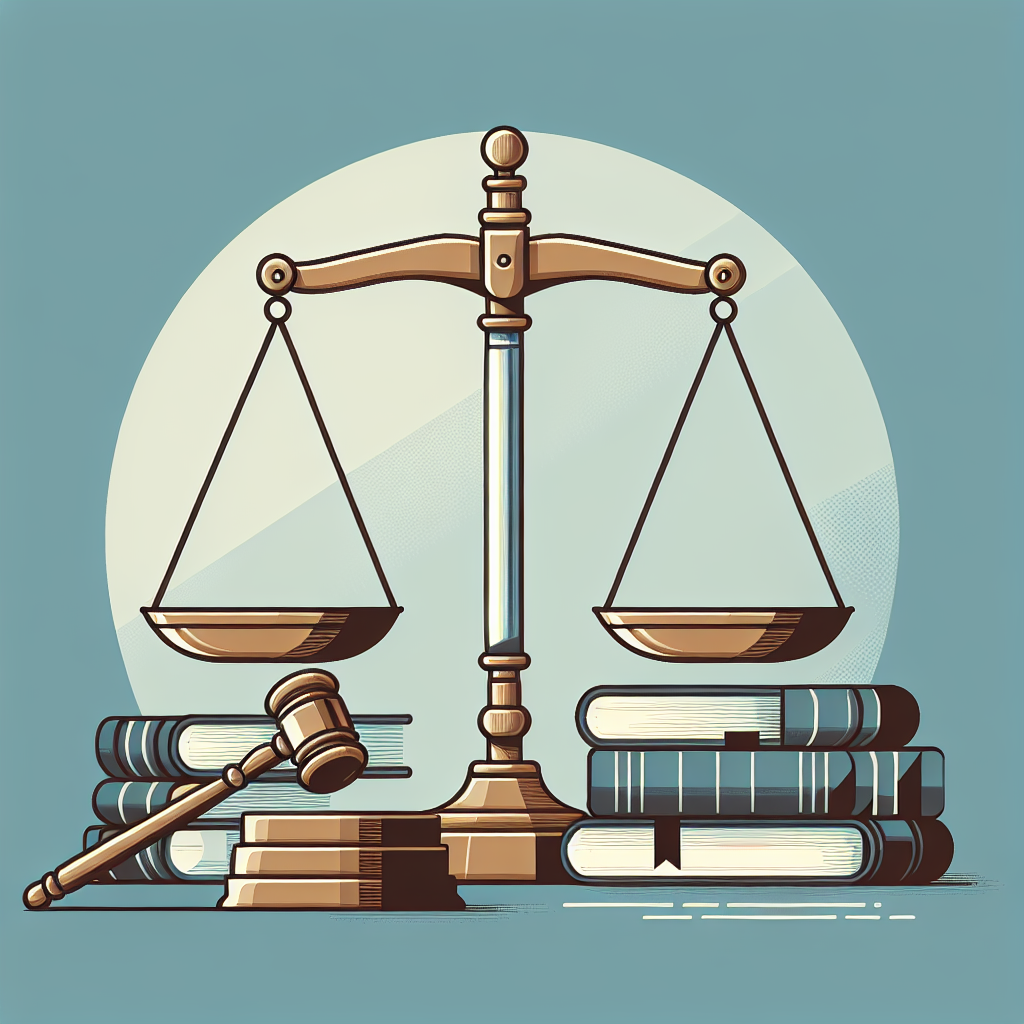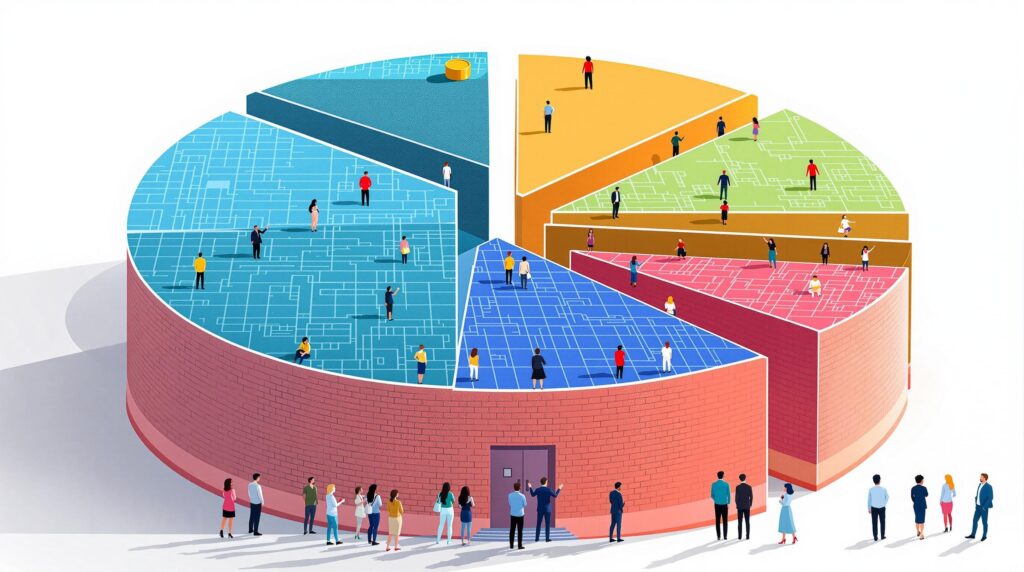[rev_slider alias=”slider-1″][/rev_slider]
Understanding Layer 1 Blockchains and Their Role in Cross-Chain Interoperability
In today’s ever-evolving digital landscape, Layer 1 blockchains stand as the bedrock of the broader blockchain ecosystem. These primary blockchain networks not only power their own distinct cryptocurrencies but also lay the foundational infrastructure necessary for a variety of decentralized applications. The unique architecture of Layer 1 solutions facilitates critical advancements in scalability, security, and most importantly, cross-chain interoperability. This section delves into the mechanics of Layer 1 blockchains, highlighting their pivotal role in enabling seamless communication and transaction across diverse blockchain platforms.
Key Features of Layer 1 Blockchains
Layer 1 blockchains are distinguished by several core features that separate them from subsequent blockchain generations like Layer 2 solutions. Understanding these features provides clarity on their operational mechanisms and their impact on cross-chain interoperability:
- Consensus Mechanisms: Layer 1 blockchains implement various consensus algorithms, such as Proof of Work (PoW) or Proof of Stake (PoS), which are critical for validating transactions without the need for a central authority. These mechanisms not only secure the network but also ensure that it remains decentralized.
- Scalability: One of the most significant challenges facing Layer 1 blockchains is scalability. Innovations such as sharding (dividing the network into smaller pieces) or adjustments in block size and creation rates aim to increase the number of transactions a blockchain can handle without compromising its speed or security.
- Interoperability: As blockchains evolve, the ability for different Layer 1 blockchains to interact seamlessly has become crucial. Features such as interoperability protocols facilitate transactions and information exchanges between distinct blockchains, enhancing the functionality and efficiency of the digital asset ecosystem.
- Upgradability: Layer 1 blockchains must be capable of adapting to new technological advancements and user needs. Protocols that allow for on-chain governance and the implementation of upgrade proposals ensure that Layer 1 blockchains remain relevant and efficient.
- Security: The decentralized nature of Layer 1 blockchains offers inherent security benefits against fraud and hacking. By distributing data across a network of computers, Layer 1 blockchains reduce the risk of centralized points of failure, thus safeguarding valuable digital assets and data.
Each of these features contributes to the robustness and appeal of Layer 1 solutions within the blockchain space. However, their role in facilitating interoperability deserves a closer examination to appreciate fully how they serve as a linchpin in the burgeoning realm of decentralized digital assets.
Interoperability is not just a technical feature; it is the gateway to creating expansive, efficient networks that can communicate and operate on a global scale, without the barriers posed by traditional financial systems.
In essence, Layer 1 blockchains do more than just process transactions. They provide a decentralized framework that supports a wide array of applications and innovations. Whether it’s through enhancing scalability through novel consensus algorithms or bridging diverse blockchain networks via advanced interoperability protocols, Layer 1 blockchains are at the forefront of the blockchain revolution, paving the way for a more interconnected and efficient decentralized future.
To further explore how Layer 1 blockchains facilitate cross-chain interoperability, it is crucial to understand specific protocols and technologies that enable these functionalities. By examining case studies and technological advancements in the following sections, we can grasp the practical implementations and real-world impact of Layer 1 solutions in optimizing cross-blockchain communications and transactions.
Overall, as blockchain technology continues to evolve, the foundational role of Layer 1 blockchains in enhancing cross-chain interoperability cannot be overstated. They are key to unlocking the full potential of the digital asset space, ensuring scalability, security, and seamless operational capabilities across different blockchain ecosystems.
How Layer 2 Solutions Enhance Cross-Chain Functionality
As blockchain technology evolves, the need for enhanced scalability, speed, and interoperability becomes paramount. Layer 1 blockchains serve as the fundamental structure of cryptocurrency protocols but often face challenges like network congestion and high transaction fees. This is where Layer 2 solutions come into play, acting as extensions built on top of the existing Layer 1 blockchains, aiming to expand their capabilities and efficiency.
What exactly are Layer 2 solutions? These are systems or technologies developed to handle transactions outside the main blockchain (Layer 1) and then record them onto the ledger. By doing so, they drastically enhance transaction speed and decrease costs, all while leveraging the security model of the underlying blockchain.
Benefits of Implementing Layer 2 Solutions
Layer 2 solutions are not just technological enhancements; they are pivotal in transforming blockchain usability and accessibility. They offer several substantial benefits:
- Increased Transaction Speeds: By handling transactions off the main chain and only settling finality on the blockchain, Layer 2 solutions can process transactions much faster than Layer 1 protocols. This is crucial for applications requiring real-time transaction processing.
- Reduced Costs: Transaction fees are significantly lowered as the bulk of operations are handled off-chain. For users and developers, this means more resources can be allocated towards innovation and growth rather than covering transaction costs.
- Enhanced Scalability: Layer 2 solutions can significantly increase the number of transactions a blockchain can handle at any given time. This scalability is vital for blockchain adoption in fields requiring large transaction volumes such as payments and decentralized finance (DeFi).
- Improved User Experience: Faster transactions and lower costs contribute to a smoother, more enjoyable user experience. This can help in accelerating the adoption of blockchain technology across various industries.
Furthermore, Layer 2 solutions are essential for enabling cross-chain interoperability. This feature allows for seamless communication and transaction between different blockchain platforms, which is indispensable in creating a fully interconnected blockchain ecosystem. For instance, a user can execute a transaction involving multiple chains without the need to manually transfer assets between them, all thanks to the interoperability facilitated by Layer 2 solutions.
Key Takeaway: Layer 2 solutions not only solve inherent limitations in Layer 1 blockchains such as scalability, cost, and speed but also play a crucial role in enabling a connected and interoperable blockchain network. Their implementation can lead to a more robust, efficient, and user-friendly blockchain infrastructure.
By adopting Layer 2 solutions, blockchain networks can achieve significant improvements in performance and user satisfaction, thus driving wider adoption and more innovative applications in technology. Whether it’s in finance, healthcare, or supply chain management, these solutions open new avenues for deploying blockchain technology in ways that were not possible before, all while maintaining the integrity and security of the main blockchain.
[rev_slider alias=”text-call-cta”][/rev_slider]
The Significance of Cross-Chain Interoperability in Blockchain Ecosystems
In the rapidly advancing world of blockchain technology, cross-chain interoperability is not just a technical term, but a substantial advancement that holds the key to unlocking huge potentials. But what exactly is cross-chain interoperability, and why is it so crucial for the future development of blockchain applications? Let’s delve into these queries and understand their impact on user adoption and the seamless integration of disparate blockchain systems.
Understanding Cross-Chain Interoperability: It refers to the ability of different blockchain networks to share and transact data seamlessly without the need for intermediaries, enabling a more connected and efficient ecosystem.
Imagine a scenario where you could use Bitcoin to directly purchase a product on an Ethereum-based e-commerce platform, or where a single dApp could utilize different cryptocurrencies without the user worrying about specific blockchain constraints. This level of seamless interaction is what cross-chain technology aspires to achieve.
Enhancing User Adoption through Simplified Experiences
One of the fundamental barriers to blockchain adoption is the complexity and isolation of blockchain platforms. Users often find it daunting to navigate through multiple cryptocurrencies and their unique operating environments. Cross-chain interoperability simplifies user experience by allowing more straightforward communications across various platforms without needing to understand the underlying technical specificities.
This simplification catalyzes user adoption, as it eliminates the intimidating barriers to entry for new users and enhances the user experience for existing enthusiasts. The convenience of accessing and transacting across multiple blockchains seamlessly can lead not only to increased user engagement but also to broader applications of blockchain technology across different sectors.
Fostering Innovation through Integrated Ecosystems
Interoperability fosters a fertile ground for innovation. Developers are not restricted by the limitations of a single blockchain network. Instead, they can harness the strengths of various blockchains to build versatile and robust applications. For instance, they might combine the high transaction throughput of one blockchain with the advanced smart contract functionality of another to create a more efficient and effective solution.
Moreover, cross-chain interoperability supports collaborative developments and pilot projects that pull resources, ideas, and innovations from various blockchain communities. This integration can lead to the creation of novel solutions that could solve existing problems more effectively or address new market needs.
Boosting the Integration of Blockchain Systems
Several industries, including finance, supply chain, healthcare, and real estate, stand to gain from blockchain interoperability. In supply chain management, for example, different stakeholders might use different blockchains for their record-keeping. Cross-chain technology allows these different systems to interact seamlessly, enhancing transparency, efficiency, and authenticity throughout the supply chain.
Similarly, in finance, interoperability can lead to more fluid transfer of assets and better liquidity across different financial platforms. This can democratize access to financial services, making them more readily available across different platforms and users regardless of the underlying blockchain technology.
Key Point: By enabling seamless interactions between different blockchain platforms, cross-chain interoperability eliminates silos, significantly enhancing efficiency and innovation in the blockchain ecosystem.
In conclusion, fostering cross-chain interoperability is more than a technological endeavor; it’s a strategic imperative for the blockchain industry. It not only enhances the user experience but also promotes innovation and integration of blockchain systems across various industries, paving the way for a more interconnected and efficient digital future.
Future Trends in Layer 1 and Layer 2 Blockchain Solutions
As the digital landscape continuously evolves, so too does the technology underpinning blockchain advancements. Layer 1 and Layer 2 blockchain solutions stand at the forefront of this evolution, pushing the boundaries of how businesses can leverage blockchain technology for more efficient, scalable, and interoperable applications. What trends can we expect to emerge in these technologies, and how might they redefine the interactions within the digital ecosystem?
Enhanced Scalability Through Sharding
In pursuit of greater scalability, sharding presents itself as a promising trend in both Layer 1 and Layer 2 solutions. Sharding involves segmenting a blockchain’s entire network into smaller, manageable pieces, or ‘shards’, that can process transactions in parallel. This method not only boosts transaction throughput but also maintains the decentralization and security of the blockchain. Enterprises looking to scale operations without compromising on these aspects may find sharding a key strategy moving forward.
Interoperability Between Chains
Another significant trend is the enhanced interoperability between different blockchain networks. As businesses incorporate various blockchain technologies, the ability for these different layers to communicate and operate seamlessly with one another becomes essential. Protocols that facilitate interoperability, such as Polkadot and Cosmos, are set to play vital roles in enabling cross-chain transactions and data exchanges, thereby fostering a more cohesive blockchain ecosystem.
Advancements in Layer 2 Solutions
Layer 2 solutions, designed to decongest and speed up processes on the primary blockchain, are expected to see significant advancements. Solutions like rollups (both optimistic and zk-rollups) and state channels are reducing the burden on main chains by handling transactions off-chain before settling on the main chain. This not only speeds up transaction times but also reduces transaction costs, making blockchain operationally efficient and more appealing for business applications.
Regulation and Standardization
As blockchain technology matures, regulatory frameworks and standards are anticipated to solidify, guiding the deployment and operation of Layer 1 and Layer 2 solutions. This trend towards formal regulation could provide a more predictable environment for businesses to innovate, offering clarity around compliance while also protecting consumer interests. Organizations vested in blockchain applications should stay alert to changes in regulations to adapt and continue to innovate effectively.
Energy Efficiency and Sustainability
The drive for sustainability in technology places energy efficiency at the core of future blockchain developments. Both Layer 1 and Layer 2 solutions are likely to gravitate towards more energy-efficient consensus mechanisms, moving away from traditional energy-intensive methods like Proof of Work (PoW). Proof of Stake (PoS) and other novel algorithms that reduce energy consumption could dominate future blockchain frameworks, aligning with global sustainability goals.
Hybrid Systems Development
Lastly, hybrid systems that combine the best aspects of both Layer 1 and Layer 2 solutions could become a more common sight. These systems aim to leverage Layer 1 for secure decentralized processing while utilizing Layer 2 for performance efficiency, offering an optimal mix of security and operability. Such hybrids could potentially address the existing limitations of current blockchain architectures, providing streamlined solutions tailored for complex business operations.
In the rapidly evolving world of blockchain, the confluence of regulatory support, innovative technologies, and cross-chain interoperability will likely shape the next phase of blockchain adoption. The strides made in enhancing scalability, efficiency, and sustainability are set to revolutionize how businesses leverage blockchain technology for competitive advantage.
The trajectory for Layer 1 and Layer 2 blockchain technologies points towards a future where digital transformation through blockchain becomes more inclusive, efficient, and universally adopted across industries. For businesses and developers, staying ahead means continuously exploring these emerging trends, adapting to new regulations, and implementing advanced solutions that these blockchain layers offer.
[rev_slider alias=”schedule-consultation-btn”][/rev_slider]

What is the role of Layer 1 in blockchain interoperability?
Layer 1 blockchains are fundamental to enabling interoperability among different blockchain networks. These platforms are responsible for:
- Securing Transactions: They ensure the integrity and security of data transactions within their own network.
- Maintaining Consensus: Layer 1 solutions provide a decentralized way to verify and agree on the state of the ledger.
- Facilitating Communication: They lay the groundwork for cross-chain communication protocols that are necessary for disparate systems to interact.
Effectively, Layer 1 blockchains serve as the backbone for any further enhancements and integrations, such as Layer 2 solutions that build upon these foundations to push the boundaries of scalability and interoperability.
How can Layer 1 blockchain enhance cross-chain transactions?
Layer 1 blockchain technology enhances cross-chain transactions by leveraging several mechanisms, such as:
- Interoperability Protocols: Utilizing protocols like Cosmos’ IBC (Inter-Blockchain Communication), which allows seamless information transfer across different blockchains.
- Native Cross-Chain Bridges: Providing built-in solutions to connect with other networks, which facilitates the safe and efficient transfer of assets.
These elements ensure that Layer 1 blockchains can communicate effectively with various blockchains, fostering a more connected and functional ecosystem.
What challenges face Layer 1 interoperability, and how are they addressed?
Several challenges impede Layer 1 interoperability, with potential solutions including:
- Scalability Issues: New consensus algorithms and sharding techniques are continuously being developed to improve scalability without compromising security.
- Security Vulnerabilities: Enhanced cryptographic measures and frequent, rigorous security audits help mitigate potential risks associated with cross-chain transactions.
- Complexity of Integration: Advancements in standardization and easier-to-implement APIs contribute to reducing the complexity involved in integrating different blockchain networks.
While challenges remain, ongoing research and technological advancements are gradually overcoming these barriers, promising a more interconnected blockchain landscape.
What are the future prospects for Layer 1 technologies in blockchain interoperability?
The future of Layer 1 technologies in enhancing blockchain interoperability looks promising, with several key trends on the horizon:
- Increased Adoption of Cross-Chain Protocols: Protocols like Polkadot’s parachains are expected to gain more traction, enabling more fluid interactions between different networks.
- Development of Universal Standards: Efforts towards creating universal interoperability standards will likely streamline communication across multiple blockchains.
These advancements are poised to make Layer 1 blockchains even more central to the blockchain ecosystem, driving forward innovations in interoperability and beyond.

Additional Practice Areas and Related Pages
Explore more about our specialized practice areas and pages relevant to Layer 1 and Layer 2 blockchain solutions for a comprehensive understanding.

[rev_slider alias=”slider-3″][/rev_slider]
[rev_slider alias=”slider-6″][/rev_slider]
Connect with Our Award-Winning Blockchain Legal Team Today
At Jara, we not only understand the complex layers of blockchain technology but also proudly stand as a recognized leader in the field. Below are some of the recent accolades that highlight our commitment and expertise within the blockchain legal sector:
| Award Name | Granting Organization | Year | Criteria | Award Information |
|---|---|---|---|---|
| Top Emerging Technology Law Firms | LegalTech Innovation | 2023 | Excellence in Blockchain & Emerging Tech Law Services | View Award |
| Innovative Law Firm of the Year | The Law Society | 2023 | Outstanding Contributions to Legal Innovation in Blockchain | View Award |
| Top Blockchain Legal Advocates | Blockchain Legal Global | 2023 | Advocacy and Excellence in Blockchain Legal Issues | View Award |
| Best Crypto Legal Consulting Firm | Crypto Business Reviews | 2023 | Consultative Excellence in Cryptocurrency Legal Cases | View Award |
| Leaders in Legal Innovation | Global Law Experts | 2023 | Pioneering Legal Solutions in Blockchain Technology | View Award |
If you’re looking for a trusted legal partner to navigate the complexities of blockchain technology and cross-chain interoperability, don’t hesitate to reach out to us today. At Jara, we are ready to harness our award-winning expertise to help you overcome any legal challenges and seize opportunities within the blockchain sphere.
Call us at 000-000-0000 or email us at [email protected]. Let’s make blockchain innovation work for you!
About the Author
Author Name is a distinguished expert in the field of blockchain technology. Specializing in Layer 1 solutions, they bring a wealth of knowledge to topics concerning cross-chain interoperability and decentralized networks.
Their insights help demystify complex blockchain architectures and highlight the practical benefits of enhanced interoperability across different blockchain platforms. Author Name has contributed to notable publications in the tech and crypto spaces and continues to work towards broader adoption and understanding of blockchain capabilities.
















